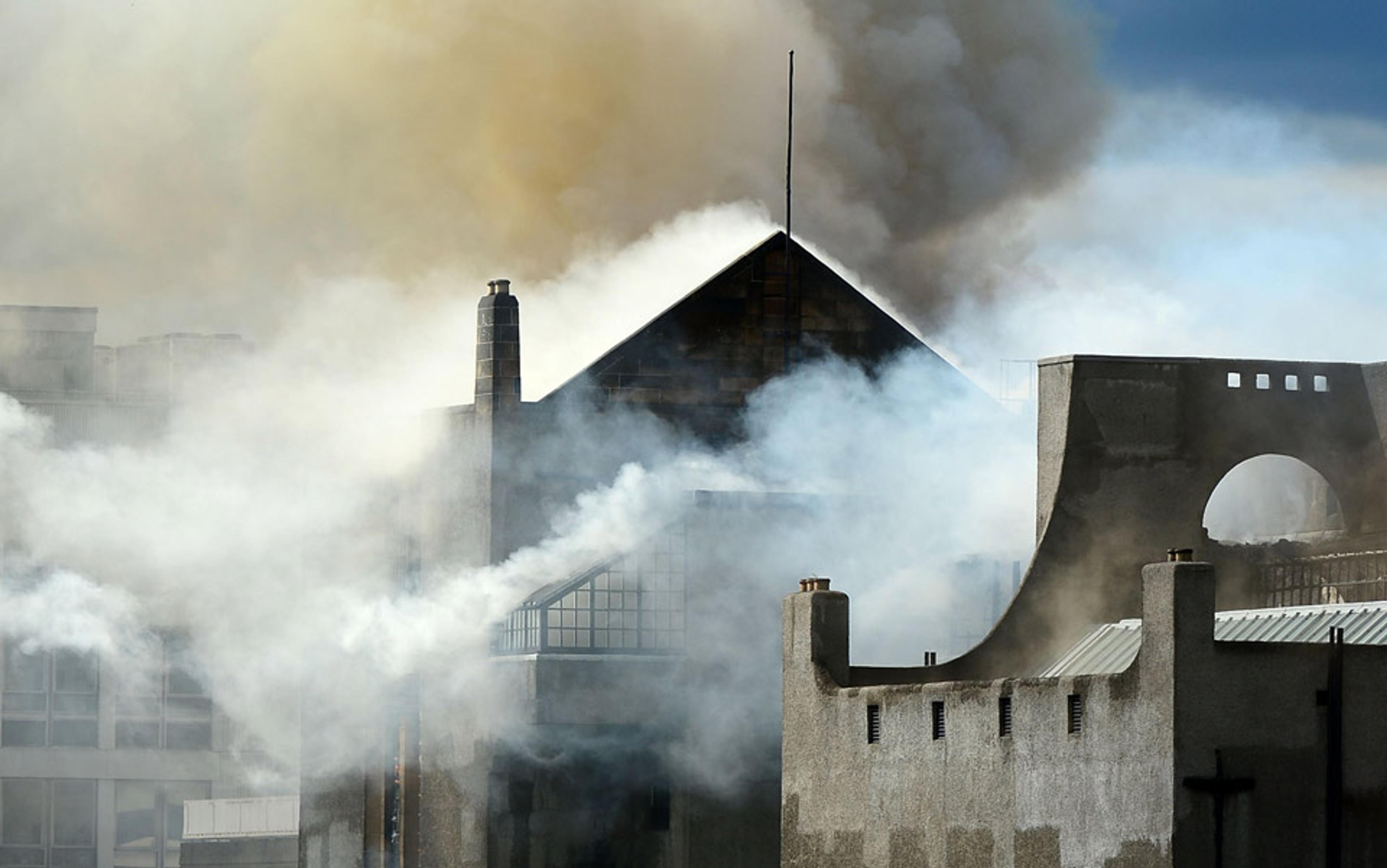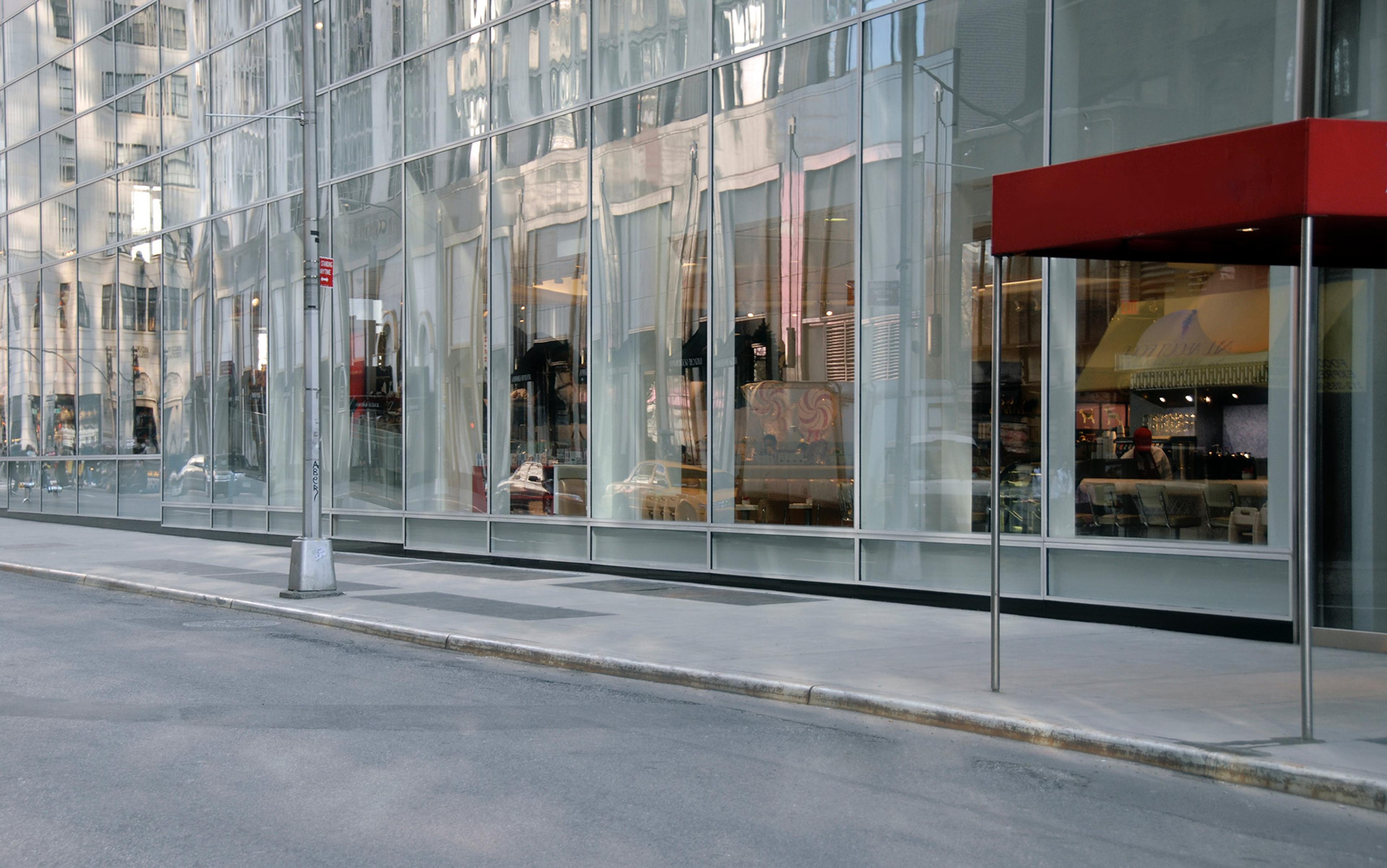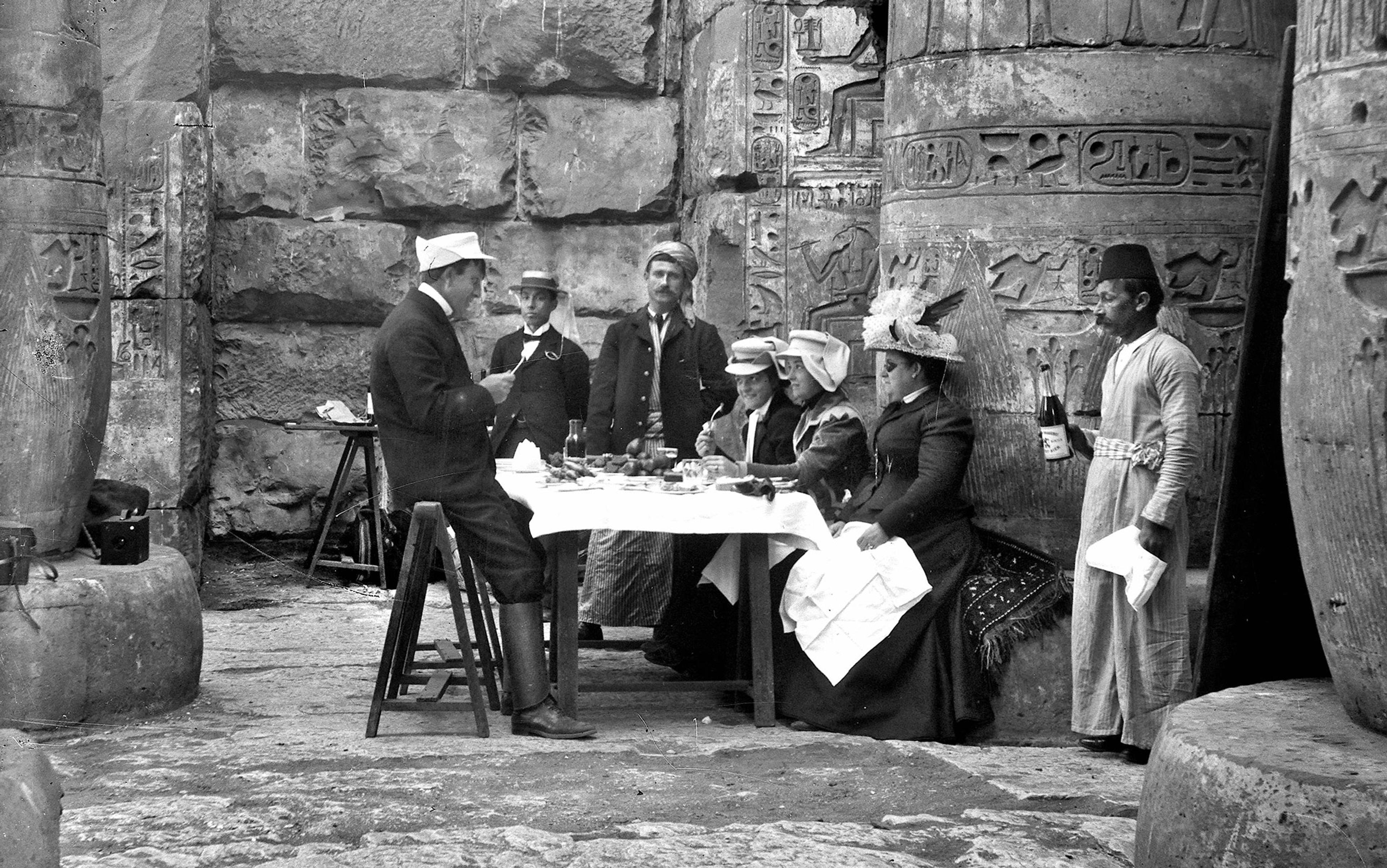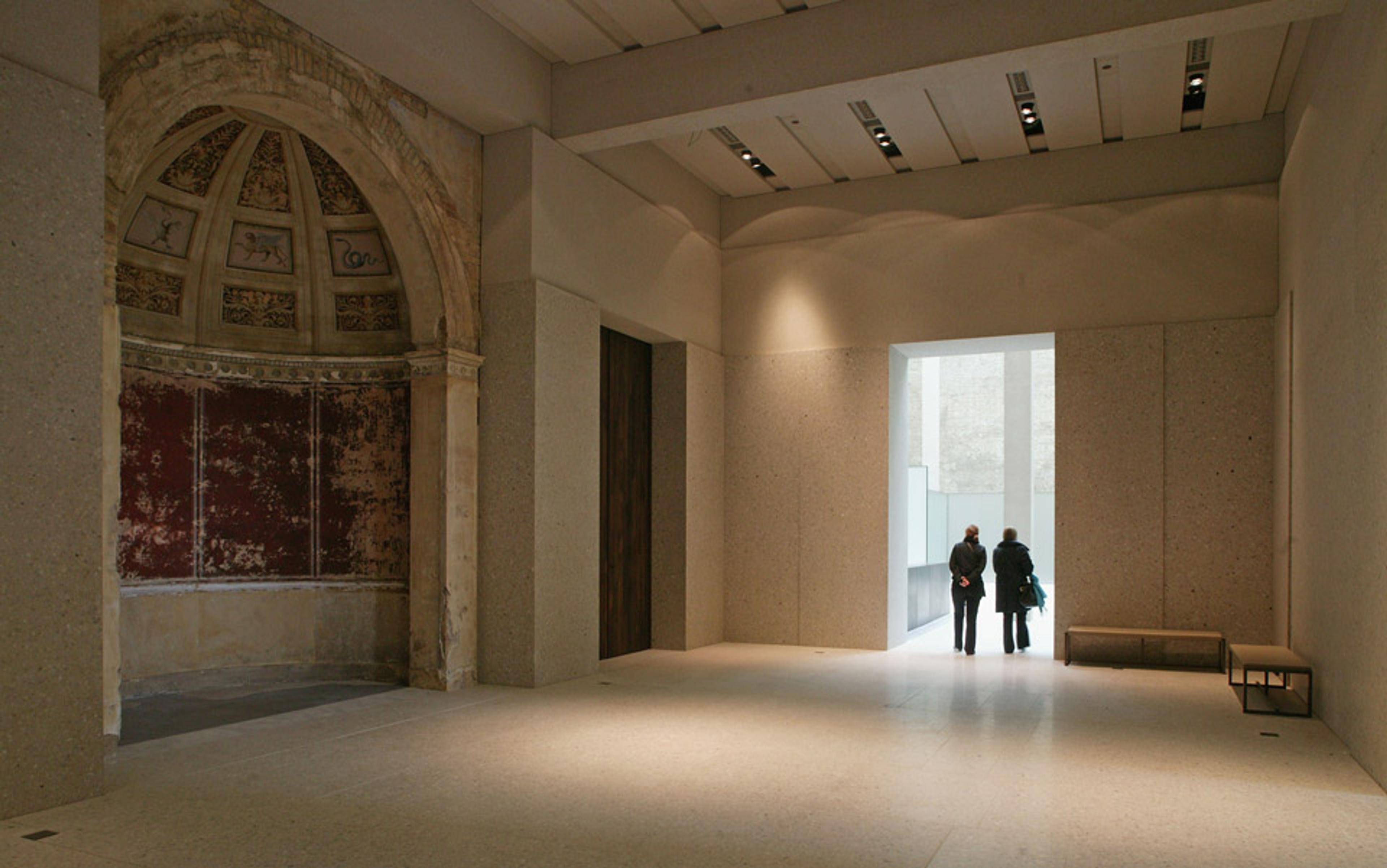In 570, the year of the prophet Muhammad’s birth, Abraha, the Ethiopian viceroy in Yemen, sent an army north into the Arabian Peninsula. Some years before, Abraha had built a magnificent church in Sanaa, hoping it would surpass the Ka’aba as a place of pilgrimage for Arabs. But when the Arabs showed no sign of changing their ways, he amassed an Abyssinian army and decided to sack Mecca. Abraha also procured a huge war elephant capable of trampling the shrine. The intended message was obvious. It terrified the Arabs, who could not match Abraha militarily, and who, as his forces approached, simply had to trust in the notion that, since the Ka’aba was God’s house, he would defend it.
Muhammad’s biographer, Ibn Ishaq, records what happened:
When they made the elephant – its name was Mahmud – face Mecca, [an Arab] came up to its flank and taking hold of its ear said: ‘Kneel, Mahmud, or go straight back whence you came, for you are in God’s holy land!’ He let go of its ear and the elephant knelt … the troops beat the elephant to make it get up but it would not; they beat its head with iron bars; they stuck hooks into its underbelly and scarified it; but it would not get up. Then they made it face the Yemen and immediately it got up and started up. When they faced it towards the north and the east it did likewise, but as soon as they directed it toward Mecca, it knelt down.
[display_most_popular]
The incident became famous – indeed, 570 was subsequently known as ‘The Year of the Elephant’.
A holy place of sanctuary and pilgrimage long before the revelations contained in the Qur’an inspired Muslims to build the Haram mosque around it, the Ka’aba was said to have been built by Abraham. It was regarded as the centre of the world, with its corners at each of the four compass points. It is made of blocks of granite, and contains an object of great cosmic significance: the black stone, a meteorite brought to Abraham by an angel from the mountainside where it had fallen.
Under Muhammad’s influence the Ka’aba was purged of idols and became the place all his followers had to turn to when they prayed. Its sacredness is evident in the ritualised care still taken over its preservation: it is draped in a black cloth, the kiswah, embellished with calligraphy. The duty of manufacturing and transporting the kiswah, which is changed each year, has always been regarded as a great honour. Once donated by the Ottoman Sultan, it is now made on special looms in Mecca under the auspices of the Saudi royal family.
What makes a building sacred, so sacred that it is recorded as having cast its spell over animals? How can it be that mere materials – stone, or bricks and mortar – become invested with special powers, such that they inspire extraordinary love, loyalty, and the willingness to fight?
It depends on what we mean by sacred. For Émile Durkheim, the founder of modern sociology, sacredness exists only alongside its counterpart, the profane. In The Elementary Forms of the Religious Life (1912), Durkheim wrote that the sacred was ‘that which the profane should not touch, and cannot touch with impunity’. A shoe is profane, so it must not make contact with the floor of a mosque, a holy space. Laughter is profane, and so giggling is frowned upon in front of an altar or war memorial. Nothing, however, is intrinsically profane. It is a category bestowed by custom. Likewise with sacredness. ‘By sacred things one must not understand simply those personal beings which are called gods or spirits,’ Durkheim continues. ‘A rock, a tree, a spring, a pebble, a piece of wood, a house, in a word, anything can be sacred.’
For the French-American anthropologist Scott Atran, who has spent years studying the motivations of religious extremists, the sacred is anything that embodies ‘a transcendental ideal – an abstract but absolute and inalienable conception of who I am and who we are – that gives meaning to human life’. This is no mere add-on, or late flowering of culture, he told me. For Atran, ‘the sacred is what likely got us out of the caves, made large-scale civilisations possible, and drives history’. Religious buildings such as the Ka’aba are heavily freighted with answers to Atran’s questions about identity. Marking the sites of miracles or martyrdoms, or standing as votive objects or blessings, they offer a means of getting close to the essence of a tradition.
those places in which the clan has invested most will develop the most powerful aura of sacredness
In Jerusalem (1969), his study of that holiest of cities, the British travel writer Colin Thubron taps into another aspect of the sacred. He says: ‘It is deep in man to love the place where he believes Divinity has walked. To pray there, to treat its earth and touch its stones, may offer him a momentary communion, and the holy sites multiply under his fervour.’
This prospect of communion is enhanced by knowing that others have stood there before you, and prayed, sung or prostrated themselves. Among the most loved buildings are those that represent a million acts of worship, stretching back in time, so that living and dead alike bolster your faith and affirm your identity. If, as Durkheim writes, ‘religious force is nothing other than the collective and anonymous force of the clan’, then those places in which the clan has invested most will develop the most powerful aura of sacredness.
And yet, driven by their social function, personal associations, beauty and shared symbolism, buildings that are not religious in the familiar sense – monuments, birthplaces, museums, streets, palaces, hospitals, theatres, skyscrapers – can also kindle strong devotional feelings.
Think of a building that is special to you. What does it evoke? Try to pinpoint the feeling. Is it contentment, joy, or awe? Does it relate to a particular point in time? When I perform the experiment, I think of two 13th-century turrets, part of the cathedral close wall that enclosed the grounds of my first school. They are built of honey-coloured limestone and partly veiled in ivy, their battlements pierced by arrow slits. The entrance to the western tower is barred by an ancient-looking wooden door. The eastern one gapes open into a sooty blackness, a staircase dimly visible inside. My friends and I would dare each other to set foot over the threshold, but we knew it was out of bounds, and what is more, terrifying – home to the ghosts of knights and maidens. Thinking about these towers now reminds me of being a child, playing happily outside and learning about the culture in which I grew up.
These memories are potent and extremely complex and, whenever evoked, they stir increased activity in the limbic system at the centre of my brain. Here, an almond-shaped structure called the amygdala stores autobiographical memories that are particularly important to our sense of self, infusing them with emotions such as joy, fear and sadness. It buzzes into life with every rite of passage, awakening the hypothalamus, which, in turn, charges up the autonomic nervous system, resulting in increased heart rate, sweating, and dilation of the pupils. If, as in this case, the memories are pleasurable, they will be accompanied by the release of dopamine, a neurotransmitter linked to reward. As a result I might return to these memories, or be motivated to return to the place where they were created, again and again.
The new science of neuroaesthetics, made possible by advances in scanning technology, tells us much about the way pure form is dealt with by the brain. Once more, the limbic system is all-important. V S Ramachandran, a neuroscientist at the University of California, San Diego, and William Hirstein, a philosopher at Elmhurst College in Illinois, argue that we are innately attuned to recognise things as unified objects – such that we find brushstrokes or architectural features that can be mentally assembled into a coherent whole more beautiful. In ‘The Science of Art’ (1999), Ramachandran and Hirstein say that, in all likelihood, this preference evolved as a strategy ‘to defeat camouflage’. Recognising grouped patterns – for example, the stripes of an animal moving through the long grass – would have enabled us to track predators or prey. But it also applies to the elegantly construed relationship between the different-sized domes of the Taj Mahal, or the towers of the Sagrada Família basilica in Barcelona.
We are biased towards symmetry too, again because a symmetrical arrangement of features is likely to indicate a living creature – a predator or a mate. Ramachandran and Hirstein point to something they call the ‘superstimulus’ as being particularly attractive. This is an element that takes the essential qualities of something recognisable and then stretches them – in other words, makes a caricature. It could be the startlingly exaggerated female forms of Chola bronzes, or the intensified colours of a Van Gogh painting. When we encounter any of these features, there is a spike in limbic activity – a jolt of recognition that gets the autonomic nervous system going.
Grandeur, symmetry and superstimulus were plumbed into the new sacred spaces of the Third Reich
While these aesthetic biases are hard-wired into all of us, every society has its own collective associations that can easily be projected onto buildings. In Italy, fascist government was accompanied by architectural styles that were understood to represent purity, modernity and discipline. The brave new world was epitomised by buildings such as the stunning Palazzo della Civiltà Italiana in Rome, which pulled out all the aesthetic stops to lend a sense of the sublime to the political project it symbolised. In fact, the Palazzo is a super-stimulating version of the Colosseum transformed into a cube, its arches pumping out a rhythm that is impossible to ignore.
Aesthetic intensity was also deployed by the Nazi regime in Germany. Grandeur, symmetry and superstimulus were plumbed into the new sacred spaces of the Third Reich; the parade grounds at Nuremberg, with its semicircular congress hall; the titanic dome of the Volkshalle planned for Berlin: these were buildings designed to burn a feeling of awe into the brain.
Shared associations aren’t always so bombastic, or direct. Literature, memoir, folklore and myth all help us develop powerful sentiments for events we have never experienced first hand. As David Lowenthal acknowledges in his influential study of attitudes to historical knowledge, The Past Is a Foreign Country (1985): ‘Nostalgia transcends yearnings for lost childhoods and scenes of early life, embracing imagined pasts never experienced by their devotees or perhaps by anyone.’ It is this collective memory that makes me admire the Chrysler Building for the way it embodies the spirit of 1920s New York, or makes me feel connected to prehistoric man (the way an audioguide can only aspire to do) when Stonehenge looms in front of me.
In the secular realm, this kind of collective and cultural association to a world forever beyond our reach but vivid in our imaginations most closely resembles religion. The emotional link, for example, forged in the minds of millions of Shia Muslims between events at the battle of Karbala in 680, when the prophet’s grandson, Hussein, was killed, and the mosque dedicated to him there, induce a feedback loop of veneration: the silhouette of the mosque prompts visions of the battle scene in the mind’s eye. The self-declared Islamic State (or ISIS) fighters who captured Mosul in northern Iraq this summer, immediately set about destroying ‘idolatrous’ shrines and monuments. Their threats to continue south to Karbala have had a galvanising effect way beyond the borders of Iraq. Syed Bilal, the spokesman of Anjuman-e-Haideri, an organisation of Shia Muslims in India, told The Daily Telegraph in June: ‘We are looking at a million volunteers to form a human chain around the holy shrines of Karbala and Najaf, in case the ISIS attacks.’
In today’s Middle East, cultural symbols are at as much risk as religious ones. In Syria, brutal civil conflict has destroyed countless buildings and monuments, but perhaps the best-known casualty is the souk of Aleppo, which was burned down in 2012. For seven centuries, it had been a permanent presence at the heart of urban life – altered, restored, embellished, neglected, restored again: but a first-hand knowledge of it linked each generation of Aleppans to their predecessors in an unbroken chain. Amid so much human suffering, it seems almost churlish to mark and mourn the tearing down of stones and mortar. But remarkable old buildings, resonant with personal or collective associations, can end up invested with extraordinary power. What happens to them matters.
In ‘Grieving for a Lost Home’ (1963), his study of the impact of slum clearance on families in mid-20th century Boston, Marc Fried wrote:
For the majority it seems quite precise to speak of their reactions as expressions of grief. These are manifest in the feelings of painful loss, the continued longing, the general depressive tone… the sense of helplessness, the occasional expressions of both direct and displaced anger, and tendencies to idealise the lost place. At their most extreme, these reactions of grief are intense, deeply felt, and, at times, overwhelming.
Communities react in different ways to the loss of buildings that are sacred to them. During the Second World War, the Luftwaffe, the Royal Air Force and the US Army Air Force obliterated vast parts of London, Birmingham, Liverpool, Plymouth, Hamburg, Dresden, Frankfurt, Düsseldorf, Yokohama, Kagoshima, and of course Hiroshima and Nagasaki. Alongside millions of houses (deeply meaningful only to those who live in them), thousands of nationally and internationally recognised buildings were swept away. Many had stood for hundreds of years. Coventry Cathedral was gutted; London’s Great Synagogue destroyed; Liverpool’s Corn Exchange; Dresden’s Sophienkirche. Everywhere the question of rebuilding arose. In Coventry, the decision was taken to create an entirely new church, but keep the ruins as a memorial. In London, many 18th-century churches wrecked by bombing were reconstructed in stripped-down style, or demolished, while leaving towers, or other features that functioned most conspicuously as landmarks, intact. In Germany, set-piece squares were recreated – as in Frankfurt and Dresden.
The sacred spirit of a city can flow into new buildings, it seems, if they resemble the old ones closely enough
The most assiduous reconstruction took place in cities such as Warsaw, where a particularly keen sense of indignation threw up exact replicas of the old quarter of the city. ‘It was our duty to resuscitate it,’ Stanislaw Lorentz, director of the Polish National Museum, told an international conference in 1963. ‘We did not want a new city… We wanted the Warsaw of our day and that of the future to continue the ancient tradition.’ The sacred spirit of a city can flow into new buildings, it seems, if they resemble the old ones closely enough.
In Berlin, where Hitler and Speer had focused their architectural ambitions to build the pagan capital of a 1,000-year Reich, the city was ravaged, humiliated, and then cut in half. The idea was to force Germans to face up to their recent past, but the divided city led to the construction of rival visions of the present, capitalist and communist. The task was taken up enthusiastically in East Berlin, where what was sacred became profane, and vice versa. The ideology of the state threw up monuments to industry and atheism as dramatic as the baroque palaces and churches that glorified monarchy and deity. The spire of the Fernsehturm, a television transmitter, dwarfed that of the Marienkirche or St Mary’s Church at its feet. And the Stadtschloss, the Hohenzollern dynasty’s city residence, badly damaged during the war, was demolished by an East German government that saw it as ‘a grotesque symbol of nationalist pride’. In 1976, it was replaced by the Palace of the Republic, a people’s palace if you like.
With reunification in 1990, the sacred-profane axis was switched again. The Palace of the Republic was condemned and demolished, partly because it was contaminated with asbestos, but also, one can’t help thinking, as part of the settling of old scores. The federal parliament recently voted to replicate the Stadtschloss (or three of its facades at least), winding the clock back to 1845, when its distinctive dome was completed. This extraordinary reconstruction will cost at least $800 million, and Europe might not even have enough qualified stonecutters to enable the work to be completed on time and within budget. Although the project is broadly unpopular – a Stern magazine poll found that 65 per cent of Germans oppose it – many Berliners were, tellingly, able to assist the rebuilding by producing pieces of the palace they had picked up and kept. Were these cherished as sacred relics of a pre-fascist past – a Berlin before the bombs came?
There are primal questions that buildings help us answer: who I am? And who we are? For the religious man or woman, the answers come ready-made. Circumambulating the Ka’aba in Mecca, or inhaling the incense at the Church of the Holy Sepulchre in Jerusalem, believers are confident in the meaning of the symbols that these buildings embody: faith, identity, the eternal life of the soul. Outside of the great, ancient religious denominations, the ground is shakier, but the sacred is still very much at large. That it resides in the material world, the world of structures, is not surprising, given that what sets human habitats apart from nature is the fact that they are built up.
‘Sacred spaces, and places,’ writes Atran ‘are the cornerstones and signposts of our civilisation, or any enduring culture or civilisation.’ Even those that don’t endure leave traces in stone behind them, as the poet Shelley knew when he wrote of Ozymandias, king of kings. What makes these buildings special? Personal association, cognitive biases and collective symbolism, alone or in combination, create an emotional charge that can be extraordinarily intense. This is the real spirit of place.






